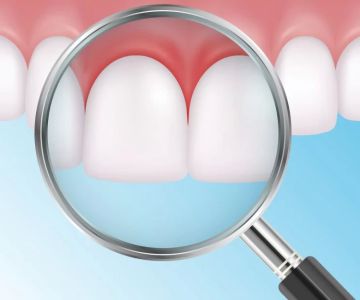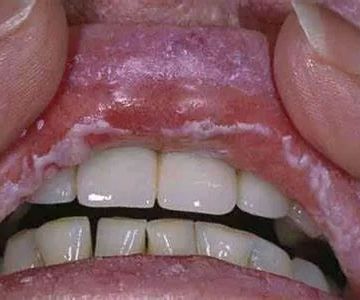
Understanding the Risks of Diseases from Oral Sex
Oral sex is a common sexual activity, but many people underestimate the risks of contracting infections through it. The mouth and throat can be entry points for various pathogens, making it possible to catch diseases from oral sex. Knowing which infections are involved and how to reduce risk is essential for maintaining sexual and overall health.
Transmission occurs through contact with bodily fluids like semen, vaginal secretions, or blood, and through direct mucous membrane exposure. Because symptoms can sometimes be mild or unnoticed, infections acquired via oral sex can go untreated and potentially cause complications.
1. Common Diseases Transmitted Through Oral Sex
1.1 Human Papillomavirus (HPV)
HPV is one of the most prevalent sexually transmitted infections worldwide and can be transmitted via oral sex. Certain strains of HPV are linked to oral and throat cancers, making awareness critical. While many HPV infections clear on their own, persistent infection with high-risk strains may lead to serious health issues.
1.2 Herpes Simplex Virus (HSV)
HSV-1, commonly causing cold sores, can also be transmitted to the genital area via oral sex, while HSV-2, typically genital herpes, can infect the oral cavity. Both viruses cause painful sores and can be spread even without visible symptoms through viral shedding.
1.3 Gonorrhea
Oral gonorrhea is an infection of the throat caused by Neisseria gonorrhoeae bacteria. It often presents with sore throat or no symptoms but is contagious and requires antibiotic treatment.
1.4 Syphilis
Syphilis can be transmitted via oral sex through contact with syphilitic sores. It progresses through stages and if untreated can cause severe complications affecting multiple organs.
1.5 Chlamydia
Though less common in the throat than genital infection, oral chlamydia can occur and may cause sore throat or no symptoms, but still requires medical treatment.
1.6 Hepatitis B
Hepatitis B virus can be spread through oral sex if there are cuts or sores in the mouth or genitals, leading to liver infection.
1.7 Human Immunodeficiency Virus (HIV)
Though less commonly transmitted through oral sex compared to other routes, HIV transmission is possible especially if there are open sores or bleeding gums. Using protection reduces this risk significantly.
2. How Symptoms Manifest and When to Seek Medical Advice
Symptoms from these infections may include sore throat, sores or blisters in the mouth or genital area, unusual discharge, swollen lymph nodes, or no symptoms at all. Because many oral infections are asymptomatic, regular screenings and honest communication with partners are vital.
If you notice persistent or unusual symptoms following oral sex, it is important to consult a healthcare professional promptly for accurate diagnosis and treatment.
3. Preventive Measures to Reduce Risk of Oral Sex Infections
3.1 Use of Barrier Protection
Using condoms or dental dams during oral sex greatly reduces the risk of transmission by providing a physical barrier against bodily fluids.
3.2 Regular STI Testing
Routine testing for STIs helps identify infections early and prevent spread to partners.
3.3 Maintaining Good Oral Health
Healthy gums and intact oral tissues reduce susceptibility to infections. Avoid oral sex if you have cuts, sores, or inflammation in the mouth.
3.4 Vaccinations
Vaccines for HPV and Hepatitis B provide protection against these infections and are recommended by health authorities.
4. Real-Life Case: Awareness Through Experience
Consider Emily, who developed a persistent sore throat after unprotected oral sex. Initially dismissing it as a cold, she later discovered she had contracted oral gonorrhea after a routine test. Prompt treatment resolved the infection, but her story highlights the importance of awareness and preventive measures.
5. Importance of Open Communication with Partners
Discussing sexual health openly with partners, including STI status and safe practices, builds trust and helps reduce risks. This communication also encourages mutual responsibility for health and safety.
6. When and Where to Seek Professional Help
If you suspect exposure to an infection through oral sex or experience symptoms, consulting a healthcare provider immediately is important. They can perform appropriate tests, offer treatment, and provide counseling on prevention. For trusted and comprehensive services, consider contacting Dentistry Toothtruth for expert guidance and care tailored to your needs.






 Westgate Dental Arts3.0 (2 review)
Westgate Dental Arts3.0 (2 review) Coventry Family Dental4.0 (247 review)
Coventry Family Dental4.0 (247 review) Familia Dental3.0 (1028 review)
Familia Dental3.0 (1028 review) Dr. Daniel S. Fife, DDS4.0 (31 review)
Dr. Daniel S. Fife, DDS4.0 (31 review) Dentistry At Suburban Square: Michael I. Wollock, DMD4.0 (1228 review)
Dentistry At Suburban Square: Michael I. Wollock, DMD4.0 (1228 review) Comfort Care Dental4.0 (1156 review)
Comfort Care Dental4.0 (1156 review) The Importance of Oral Health Education During Pregnancy for a Healthy Pregnancy
The Importance of Oral Health Education During Pregnancy for a Healthy Pregnancy Best Tips for Brushing Your Teeth Properly for Healthy Gums: Essential Techniques for Oral Health
Best Tips for Brushing Your Teeth Properly for Healthy Gums: Essential Techniques for Oral Health Why Skipping Dental Checkups Can Lead to Bigger Oral Health Problems
Why Skipping Dental Checkups Can Lead to Bigger Oral Health Problems Advantages of Porcelain Dental Restorations
Advantages of Porcelain Dental Restorations How Can Diabetes Cause Tooth and Gum Problems? Preventing and Managing Oral Health Issues
How Can Diabetes Cause Tooth and Gum Problems? Preventing and Managing Oral Health Issues Healthy Habits for Promoting Good Oral Health and Hygiene: Tips for a Healthy Smile
Healthy Habits for Promoting Good Oral Health and Hygiene: Tips for a Healthy Smile